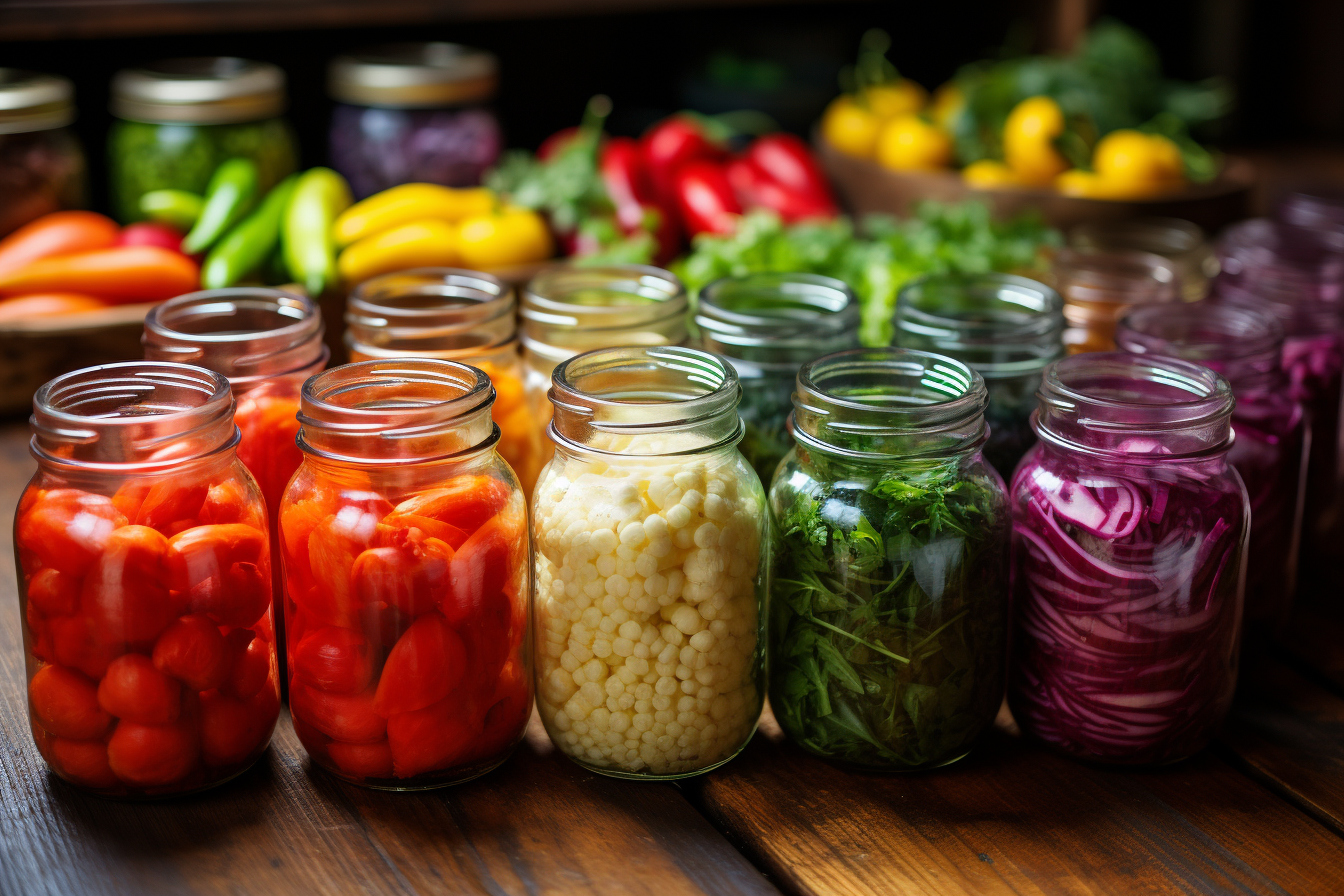Fermentation is an ancient culinary practice that not only adds a unique taste to foods but also provides a valuable source of probiotics. These friendly little bacteria are essential for balanced digestion and a strong immune system. Adopting the ritual of preparing homemade probiotics through fermentation recipes can be a real turning point for your health and well-being.
Fermentation, A Probiotic Gastronomic Journey
Fermentation is a delicate art that transforms food through the action of microorganisms. Vegetables, fruits, grains, and even milk can become health vectors by promoting the growth of beneficial bacteria. Initiating this process at home means embracing a rich culinary tradition and creating a perfect symbiosis with the needs of our body.
The Benefits of Probiotics From Fermentation
Interest in probiotics has continued to grow in the face of studies demonstrating their key role in preserving our health. Adding homemade fermented products to our diet boosts the immune system, facilitates digestion and can even improve our mood by acting on the gut-brain axis.
Fermentation Recipes to Discover
Homemade sauerkraut
Cabbage, rich in fiber, vitamins and minerals, becomes a superfood when fermented. To start, thinly slice some cabbage and massage it with salt. The salt extracts water from the cabbage, creating a brine where lactic acid bacteria will grow. Pack the cabbage into a clean jar, make sure it is completely submerged in the brine, and leave it to ferment for several weeks in a cool, dark place. The result? A crispy sauerkraut bursting with probiotics.
Sparkling Water Kefir
Water kefir is a lightly sparkling probiotic drink made from kefir grains. Mix the grains with water and sugar in a jar. After 24 to 48 hours, the drink becomes sparkling and is ready to be filtered. To vary the pleasures, add fruit or herbs before the second fermentation for an aromatic touch.
Homemade Probiotic Yogurt
Yogurt can easily be fermented at home using milk and a little store-bought yogurt as a starter. Heat the milk, let it cool and add the yogurt. Then, wrap your preparation and leave it in a warm place until the magic happens. You will obtain a creamy yogurt that will delight your taste buds and your microbiota.
Spicy Kimchi
This Korean specialty is another wonderful way to consume fermented vegetables. Combine Chinese cabbage and radishes with a mixture of chili paste, garlic, ginger and other spices. Leave to ferment for at least a week. Kimchi is an ideal accompaniment to enhance your dishes with spicy and probiotic notes.
The Musts for Successful Fermentation
Patience is the key to fermentation. Allow the products to ferment at their own pace and watch for signs of fermentation such as bubbles forming or a change in taste. Containers must be sterile to avoid contamination and temperatures must be controlled to ensure an optimal environment for microorganisms.
Create a Fermentation Routine for Healthy Living
Incorporating fermentation into your eating routine is not only a healthy habit, it is also a sustainable and economical practice. You can recycle your forgotten vegetables in the fridge and reduce food waste by turning them into fermented delicacies. Plus, once you get the hang of it, you can experiment with various ingredients and flavors, creating tailor-made probiotics for your diet.
Growing your own probiotics at home is a rewarding process that forges a deep connection with what we eat. Not only are you enriching your diet with living foods, but you are also developing an ancient and essential culinary skill. So, embark on the adventure of fermentation and rediscover the pleasure of a cuisine that is full of flavors and benefits for your health!













